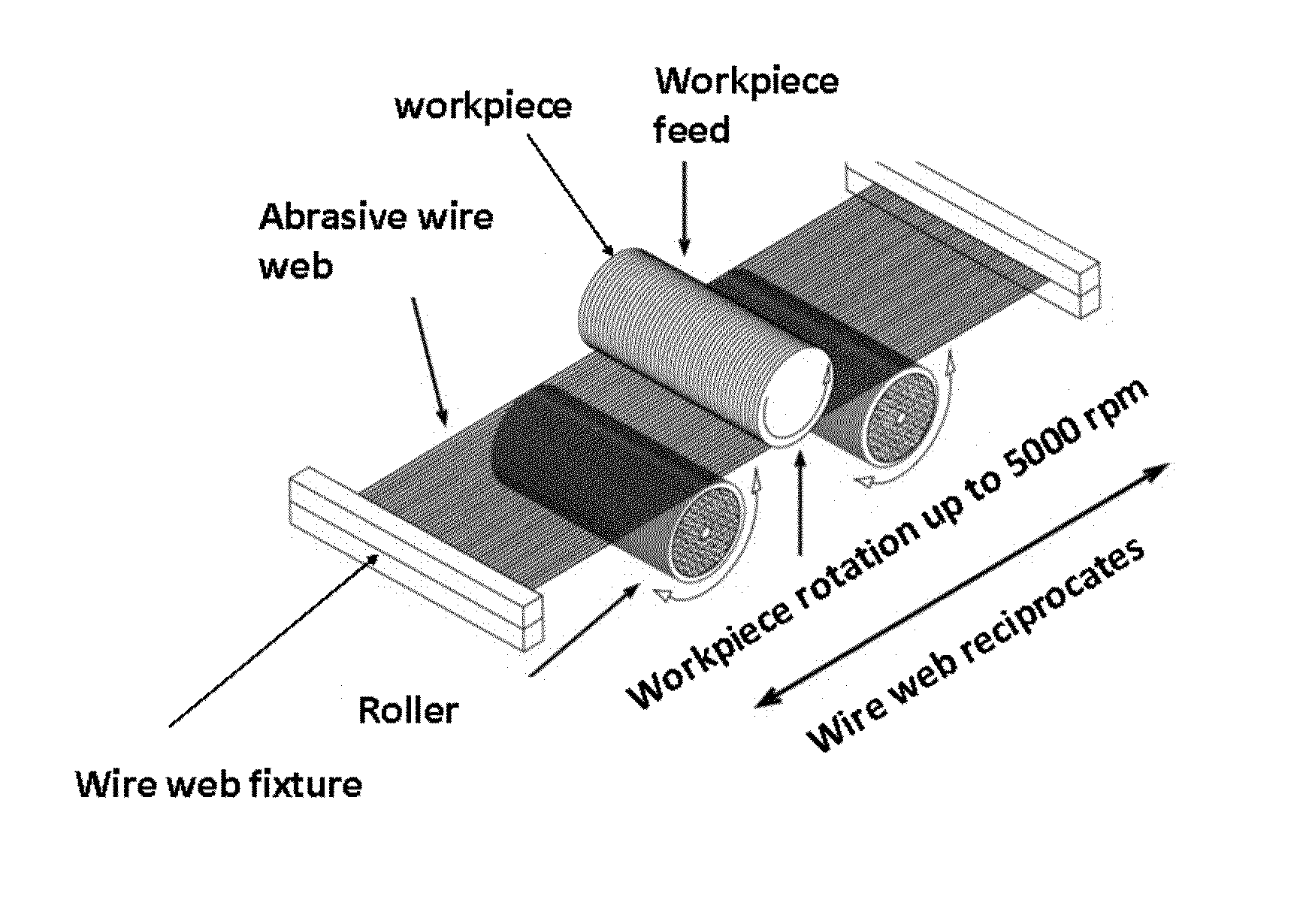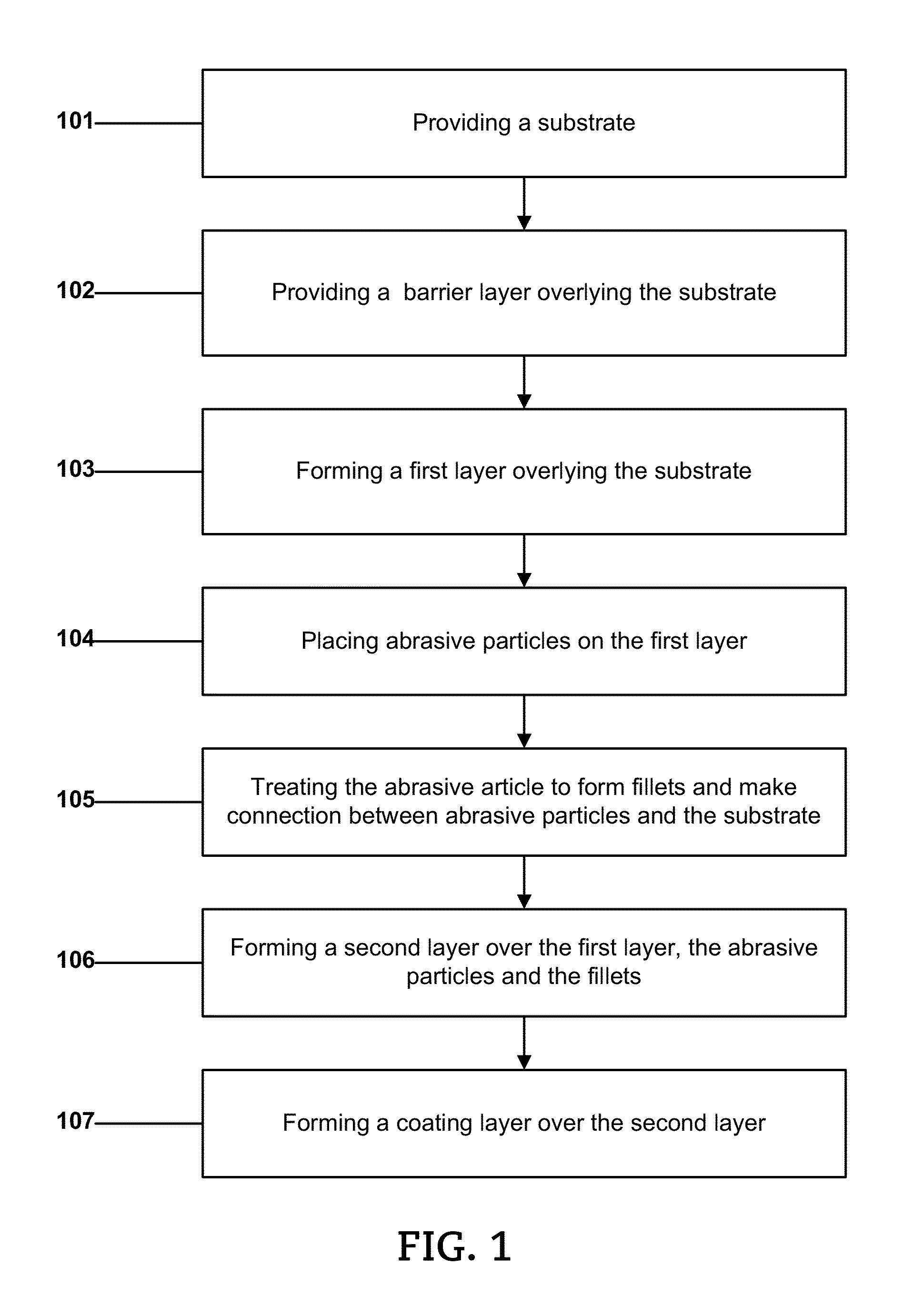Abrasive Article and Method of Forming
a technology of abrasive articles and abrasives, which is applied in the field of single-layered abrasive articles, can solve the problems of reducing the tensile strength of the wire saw, consuming time and money, and preventing the rapid production of wire saw abrasive tools
- Summary
- Abstract
- Description
- Claims
- Application Information
AI Technical Summary
Benefits of technology
Problems solved by technology
Method used
Image
Examples
example 1
[0309]A length of high strength carbon steel wire is obtained as a substrate. The high strength carbon steel wire has an average diameter of approximately 180 microns. A first layer is formed on the external surface of the substrate via electroplating. The electroplating process forms a first layer having an average thickness of approximately 3.75 microns. The first layer is formed of an essentially pure tin composition.
[0310]After forming the first layer, flux material is applied on the wire with nickel-coated diamond abrasive particles having an average particle size of between 30 to 40 microns.
[0311]Thereafter, the substrate, first layer, and abrasive particles undergo tin re-flow heating (diamond tacking) in a furnace at a temperature sufficient to heat the first layer to a re-flow temperature between 30° C. and 50° C. above the melting temperature of the first layer (i.e., melting temperature for tin is 232° C.). The abrasive pre-form is then cooled and rinsed. The process of b...
example 2
[0314]A length of high strength carbon steel wire is obtained as a substrate. The high strength carbon steel wire has an average diameter of approximately 180 microns. A first layer is formed on the external surface of the substrate via electroplating. The electroplating process forms a first layer having an average thickness of approximately 3.75 microns. The first layer is formed of an essentially pure tin composition.
[0315]After forming the first layer, flux material is applied on the wire with nickel-coated diamond abrasive particles having an average particle size of between 30 to 40 microns.
[0316]Thereafter, the substrate, first layer, and abrasive particles undergo tin re-flow heating (diamond tacking) in a furnace at a temperature sufficient to heat the first layer to a re-flow temperature between 1° C. and 10° C. above the melting temperature of the first layer (i.e., melting temperature for tin is 232° C.). The abrasive pre-form is then cooled and rinsed. The process of bo...
PUM
| Property | Measurement | Unit |
|---|---|---|
| Temperature | aaaaa | aaaaa |
| Temperature | aaaaa | aaaaa |
| Fraction | aaaaa | aaaaa |
Abstract
Description
Claims
Application Information
 Login to View More
Login to View More - R&D
- Intellectual Property
- Life Sciences
- Materials
- Tech Scout
- Unparalleled Data Quality
- Higher Quality Content
- 60% Fewer Hallucinations
Browse by: Latest US Patents, China's latest patents, Technical Efficacy Thesaurus, Application Domain, Technology Topic, Popular Technical Reports.
© 2025 PatSnap. All rights reserved.Legal|Privacy policy|Modern Slavery Act Transparency Statement|Sitemap|About US| Contact US: help@patsnap.com



